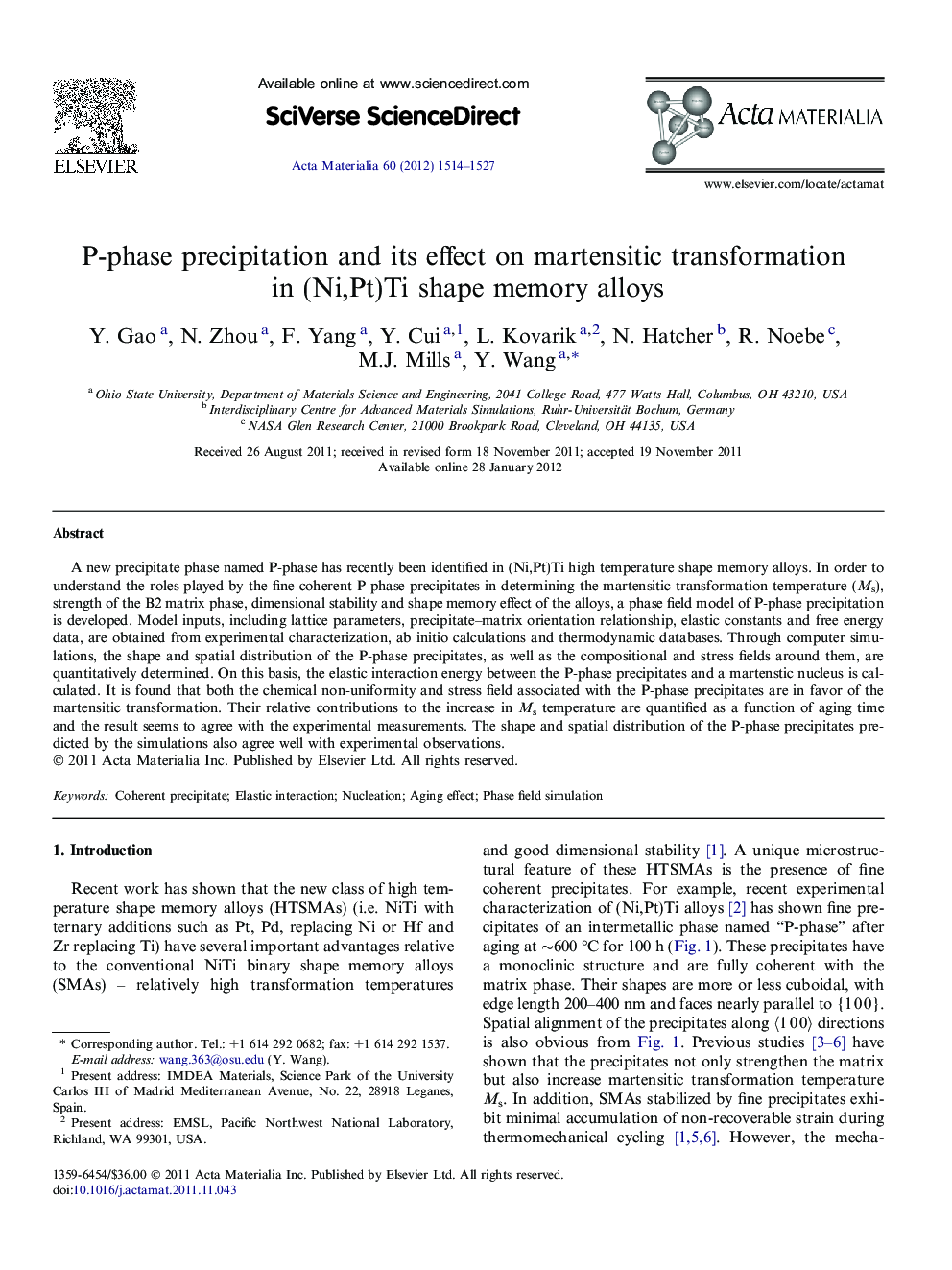| Article ID | Journal | Published Year | Pages | File Type |
|---|---|---|---|---|
| 1446810 | Acta Materialia | 2012 | 14 Pages |
A new precipitate phase named P-phase has recently been identified in (Ni,Pt)Ti high temperature shape memory alloys. In order to understand the roles played by the fine coherent P-phase precipitates in determining the martensitic transformation temperature (Ms), strength of the B2 matrix phase, dimensional stability and shape memory effect of the alloys, a phase field model of P-phase precipitation is developed. Model inputs, including lattice parameters, precipitate–matrix orientation relationship, elastic constants and free energy data, are obtained from experimental characterization, ab initio calculations and thermodynamic databases. Through computer simulations, the shape and spatial distribution of the P-phase precipitates, as well as the compositional and stress fields around them, are quantitatively determined. On this basis, the elastic interaction energy between the P-phase precipitates and a martenstic nucleus is calculated. It is found that both the chemical non-uniformity and stress field associated with the P-phase precipitates are in favor of the martensitic transformation. Their relative contributions to the increase in Ms temperature are quantified as a function of aging time and the result seems to agree with the experimental measurements. The shape and spatial distribution of the P-phase precipitates predicted by the simulations also agree well with experimental observations.
